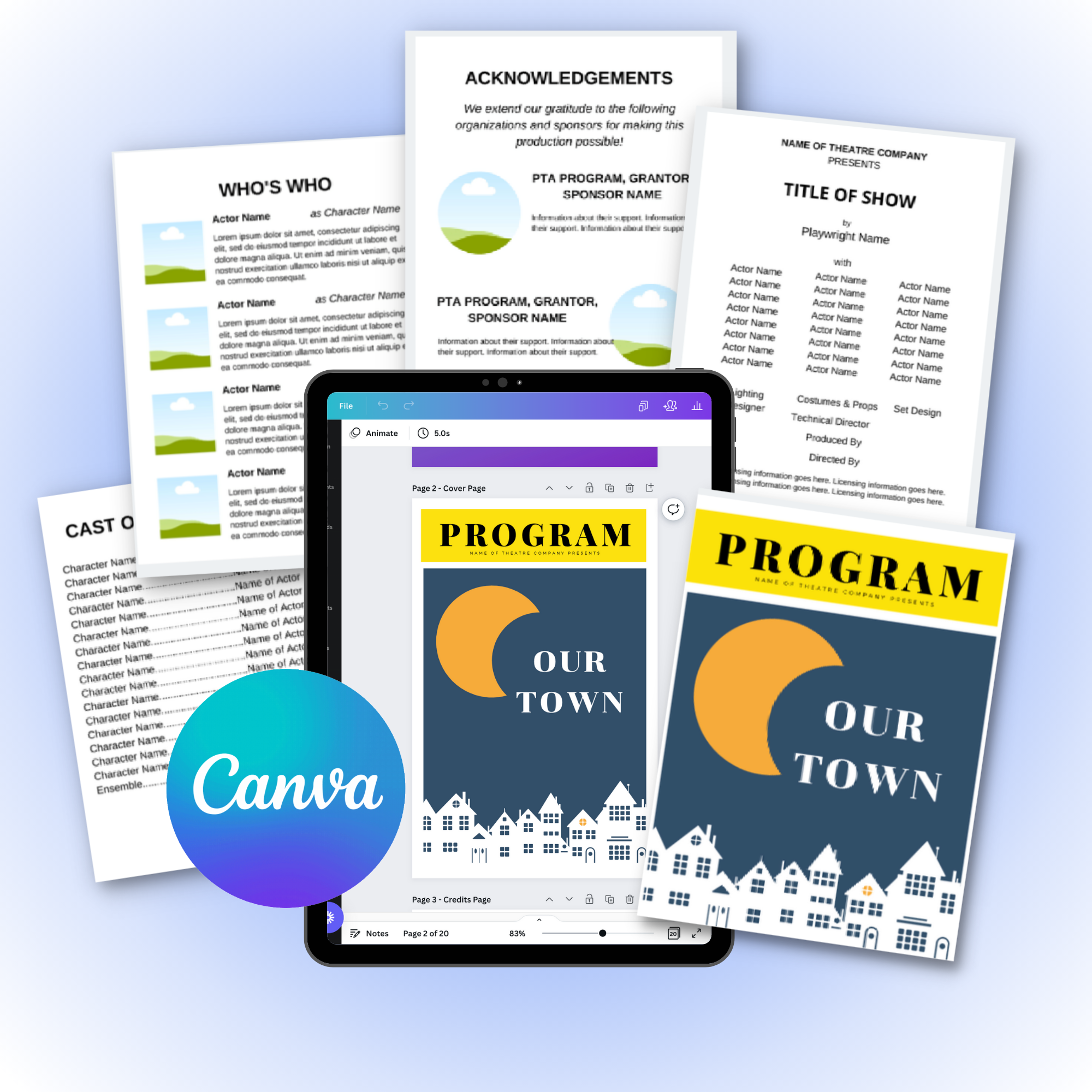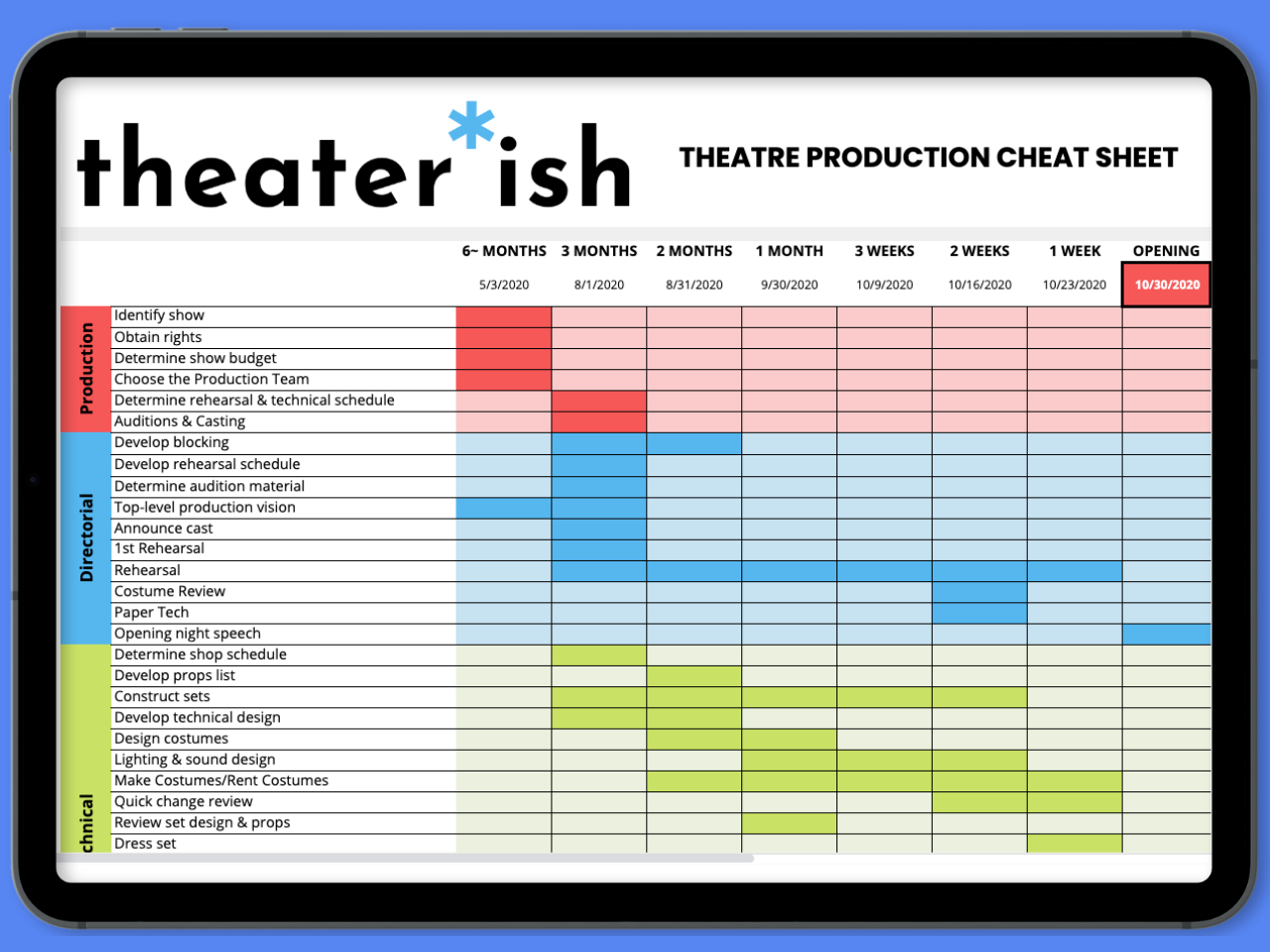Theatre Template: The Audition Form
The Audition Form template is the first document your potential actors interact with. It's important to keep the form straightforward and simple, after all they will be completing it under audition nerves!
An actor should be able to fill out an audition form in less than five minutes and if you'll be asking for a headshot, resume, and conflicts (which we recommend you do!) then be sure to have given all actors a heads up in advance of arriving at auditions (if you have a digital audition form like we teach in the Pro Production Bundle, they will even be able to fill out the form in advance).
Auditions give actors a sample of the production process and style of the director. The focus should always be on getting the director and audition team as much time as possible with the actors to suss out the best-fit talent. This is why the audition form process needs to be managed well.
Stage managers, audition volunteers, student crew members should be engaged from the outset on exactly how the auditions should flow. It is best if the Director can remain in the audition room and the SM manages all logistical components of moving actors in and out of the auditions.
Production Phase: Pre-Production, Auditions
How to use: First consider how your auditions will flow. Will actors be brought in by groups? In scenes? Solo for songs or monologues? Determine your audition process first.
Then decide how the audition form will move. Does the actor receive it when they arrive, complete it, and then never see it again. Do they hold on to it until they get in the audition room and hand it off directly to the director? Depending on your team and audition environment pick the process that has the least amount of logistical complexity, you'll want all energy focused on eliciting great performances from your auditioning actors above all else.
The best tip to stay organized is to number all actors and keep that number on any materials related to the actor. If a headshot or resume is turned in, staple it to the audition form and also assign the actor a number. The Stage Manager should be keeping a log of all auditionees and their numbers so if any materials get separated the number can always be referenced.
Here are the elements for a great audition form:
- Easy to read and follow design (remember your actors will be nervous!)
- Must-haves:
- Actor #
- Actor Full Name
- Contact Info
- Previous Experience
- Nice-to-have:
- Physical makeup (height, weight, eye color, hair color, shoe size)
- Preferred roles
- Will accept any roles
- Other talents
- Conflicts with the rehearsal schedule
- Bonus - 2nd Page:
- Director's comments and notes on the audition performance
- Callback decision

------------------------------
The Pro Production Bundle
This theatre production template is one of over 100+ templates, checklists, forms, and tutorials included in the Pro Production Bundle. Check out the Pro Production special now:




